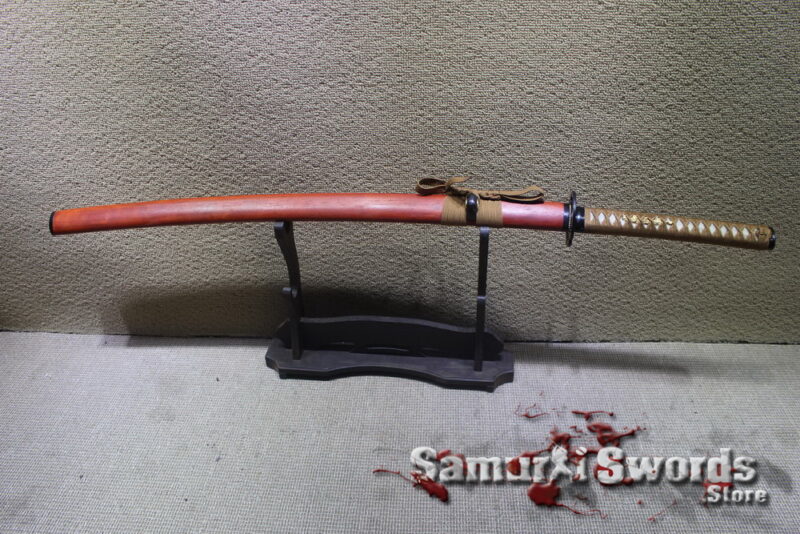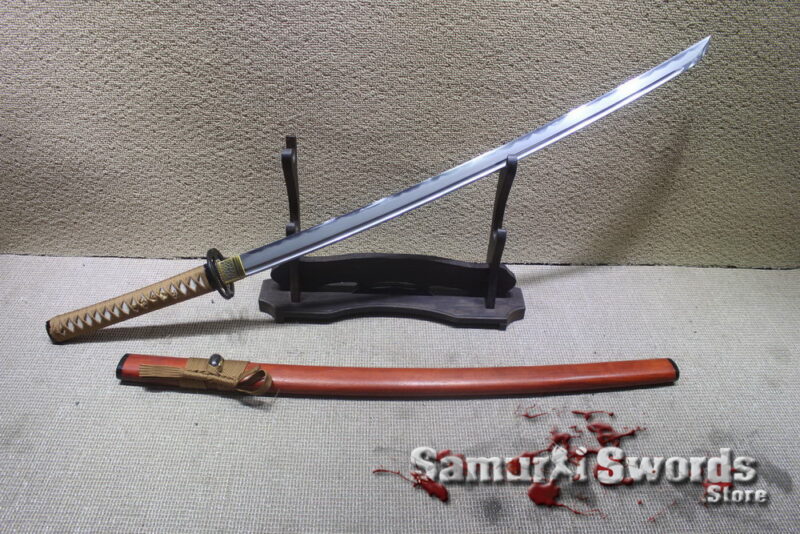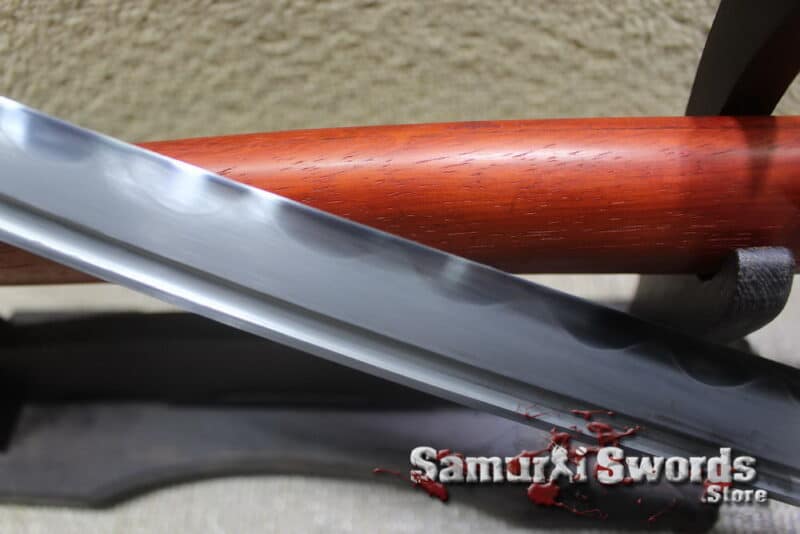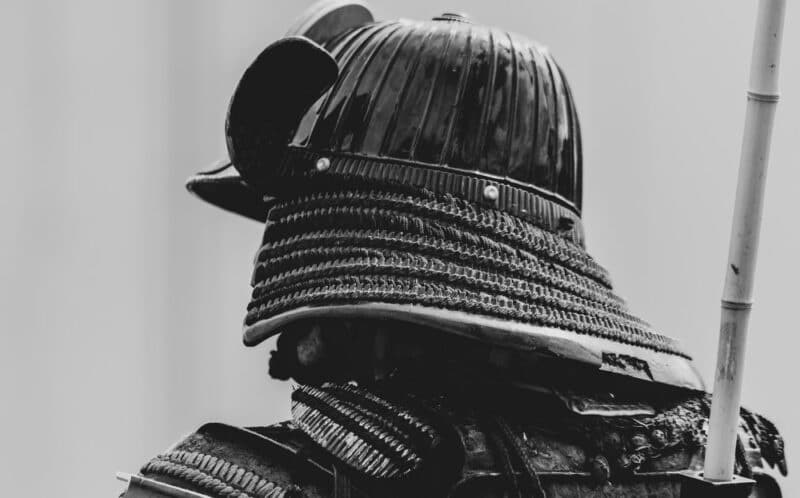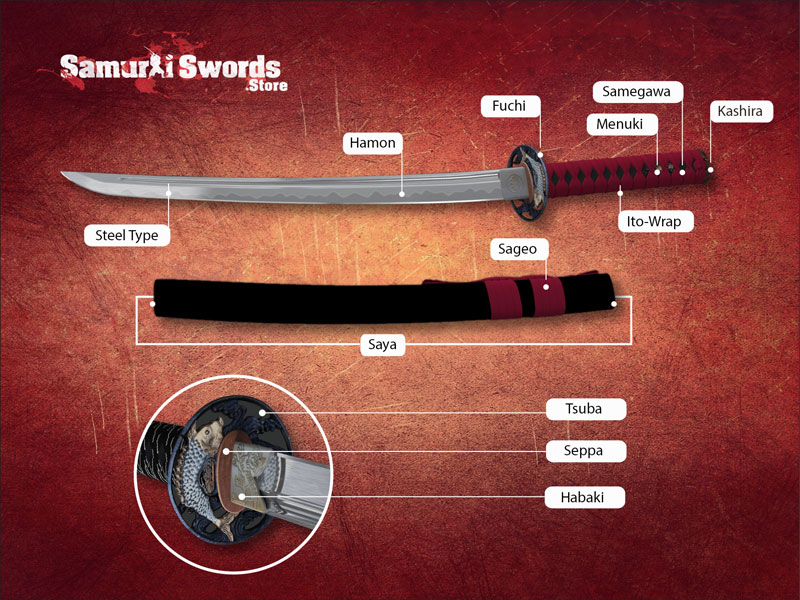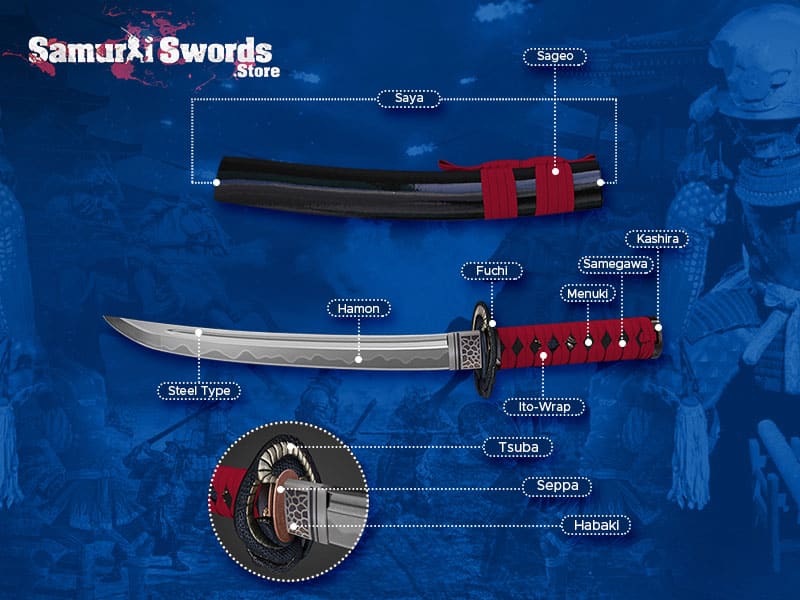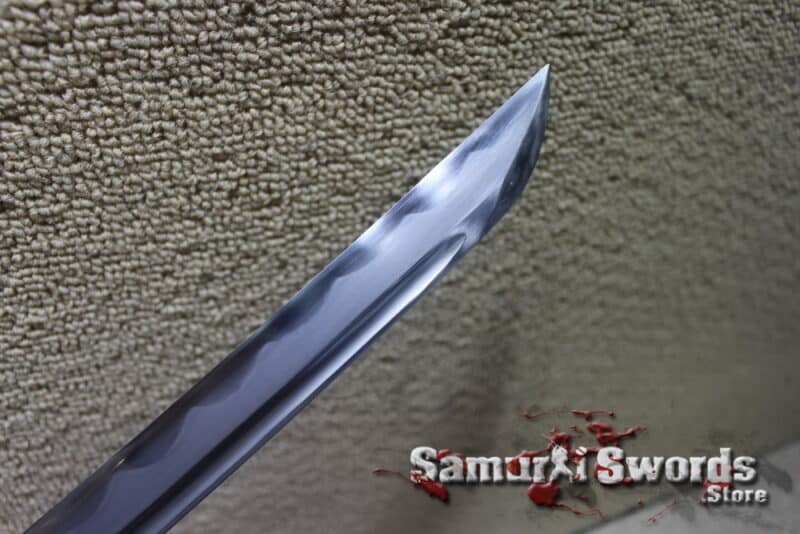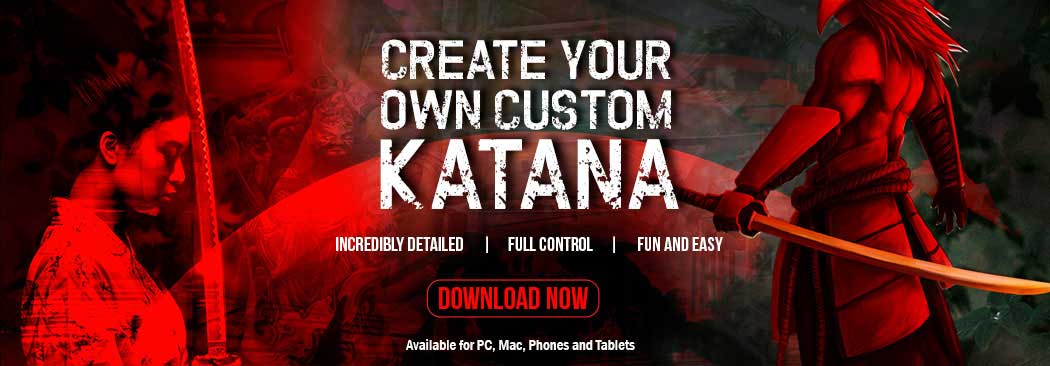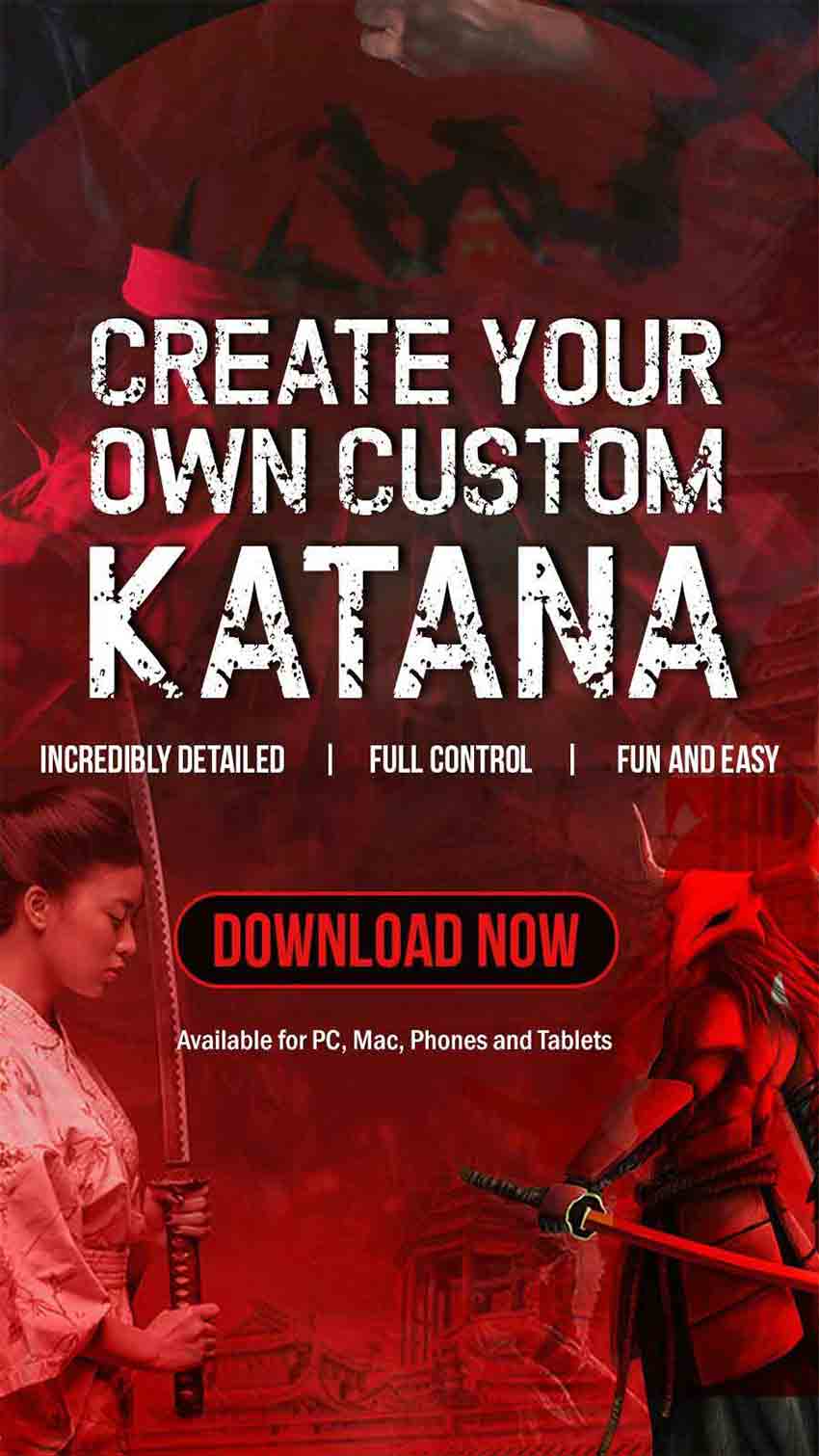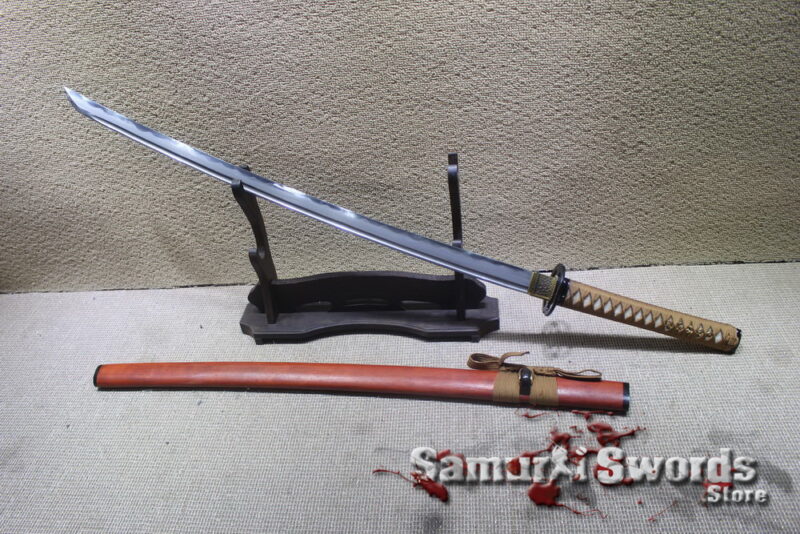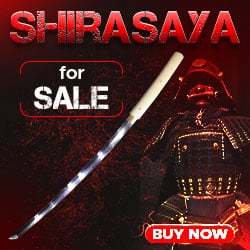Create Your Custom Samurai Sword
Sakabato – Reversed Blade Katana
The Sakabato or a reversed blade Katana is one of the most enigmatic swords in popular culture.
More specifically, it is one of the most enigmatic Japanese swords.
Its origin is located in the anime Rurouni Kenshin —better known as Samurai X—, and it’s used by the main character of the show, called Himura Kenshin.
It is one of those swords that mark a before and after in popular culture, like the extremely long Sephiroth’s nodachi —from the Final Fantasy saga— or the iconic lightsaber that made Star Wars, George Lucas’ science fiction saga, so emblematic.
However, unlike the lightsaber, this is one of the few fantasy weapons that has had the honor of being replicated in the real world.
And, perhaps, it’s even as effective as it is in anime.
Today we’ll take a look at the Japanese Sakabato also known as the Reversed blade Katana.
What is the Sakabato?
The Sakabato —also known as the reverse blade sword or reversed katana— is a Japanese sword similar to the katana created and popularized by the cult anime Samurai X (Rurouni Kenshin).
It’s a weapon created at the beginning of the Meiji era: an era that augured the peace of Japan thanks to the end of the shogunate and the restitution of the figure of the emperor as the definitive governor of the country.
At first glance, the Sakabato is an ordinary Japanese sword. It has a normal handle composed of Ito, Samegawa, and a circular Tsuba. Its blade is as long as any other katana, as well as its curvature and its tip.
Nothing seems especially different on it, which is why in the anime it is not possible to distinguish the difference between it and a common Japanese sword at first.
However, on closer inspection it is possible to distinguish what makes this sword so different: it has no cutting edge.
At least, not where the edge of a conventional sword should be.
The Sakabato is characterized precisely by having its cutting edge on the back of the sword— known to Japanese sword experts as Mune.
The reason why the Sakabato has its edge in the Mune instead of the Ha like the rest of the Japanese swords is that it’s a weapon that was created not for war, but for peace.
The main objective of the reversed blade Katana is not to mercilessly kill an opponent, but to incapacitate them so that they can no longer harm.
That is the true function of this sword.
In case of having to use it to kill someone, one must reverse the sword, which forces its holder to use it in a complicated way that will make him think twice before trying to use it to kill someone.
Therefore, Himura Kenshin only uses the Sakabato in a non-lethal way, always hitting with the blunt side of the sword. In this way, and only because of his skill, he can defeat even the most dangerous opponents.
His Sakabato has the design that is commonly associated with the katanas of the Shinto era. It has a Hamon notare —the whitish wake that borders the edge of the sword, a symbol of the quality of the blade— which makes it difficult from afar to distinguish where the cutting edge is.
The Sakabato is a legendary weapon, forged only for the most pacifist of warriors. He who fights not for the taste of adrenaline or the sake of power, but to bring peace to the world.
Someone who fights so that, ironically, he doesn’t have to fight anymore.
Another thing that characterizes the Sakabato is also its superior quality to conventional Japanese swords, which makes it more resistant.
However, in Samurai X, the protagonist once breaks this sword and has to resort to a new Sakabato.
The Sakabato in Samurai X
In the anime Rurouni Kenshin, Himura Kenshin is a type of samurai known as Hitokiri a reversed blade Katana— which actually existed in feudal Japan. These are swordsmen sent by important people to kill someone.
However, even though this definition is more similar to that of a ninja, what made the Hitokiri special was that they were more similar to a ronin than a hitman.
In addition, they possessed exceptional swordplay skills, which made them efficient not only at killing from behind but even at facing an enemy face-to-face.
In Samurai X, Himura renounces a life of killing and spends years traveling throughout Japan as a rouroni, a term designated for those ronin who seek both to rediscover themselves spiritually, pursuing enlightenment, and to serve ordinary people in need of help.
These swordsmen in the series live with almost no wealth, accompanied only by their sword, and earn their living by working for others.
In the series, Himura Kenshin carries a sakabato because he has taken a vow never to kill again. That is why, despite fighting for his ideals, he does so always seeking not to kill, for he already knows the dark reality of life as a killer.
This reversed blade Katana sakabato is considered a divine blade, is the last of the blades of Arai Shakku, which were created in honor of the times of peace that the Meiji era augured. It also symbolized the end of his career as a forger of blades destined to kill.
Throughout the anime, two of these divine blades are forged. One was called kageuchi, which translates to Shadow Performer, and the other shinuchi, which means Star Performer. Both eventually come into Himura’s hands.
The Sakabato Kageuchi was Himura’s weapon for ten years. His name, which includes the word “shadow” in Japanese, might be a reference to the fact that the character was leaving his dark past as a killer.
This sword, however, was broken in 1878, in a duel between Himura and Seta Sojiro.
After his sword was broken, Himura travels to Hakusan Shrine, where the second Sakabato, Shinuchi, is located.
Himura takes the sword with the permission of the son of the Sakabato’s forger and uses it to fight Sawagejo.
However, the wooden handle of the sword is not able to resist the force of Himura’s special technique, and it breaks, revealing an ancient engraving that said:
“Slashing myself, I have trained countless blades. My son reviles, but for my grandson, I bleed”.
After that, Himura replaces the Sakabato’s handle with his old sword and also gives him a steel sheath, which he can use when fighting.
As proof of the superior quality of the Sakabato Shinuchi over other swords, when this sword struck the Norimune of Sojiro, which was superior to the sword that had broken Himura’s Kageuchi in the past, it did not receive a single scratch. Quite the opposite, it cracked Sojiro’s blade.
The two Sakabato that Himura Kenshin uses throughout history is virtually identical. The only difference is that the one drawn on Watsuki’s first one-shot looks slightly different; the decorations on its handle have a complex design.
The symbolic value of the Reversed Blade Sakabato
The Sakabato, as mentioned above, is not a normal sword. Rather, it is a sword that is opposed to the reason for which swords exist: to kill.
Instead, this weapon is made so that its wearer can defend himself without the need to mortally wound his opponent.
The fact that it still has an edge, however, allows that given an emergency circumstance this sword can be used to kill. But the protagonist resists this.
In the context of anime, the Sakabato plays the role of a kind of test for Himura. He is sorry for his past, so the reversed blade Sakabato Katana acts as a tool for him to do his penance.
The fact that the blade of the sword is constantly pointing at him is also a proof of this: a kind of Karma that threatens to return against Himura for the murders of his past.
It acts as a handicap, as something that Himura has to overcome in order to pay for his sins. It is a test that measures to what extent he will be able to keep his promise and not kill anyone else.
There are even moments in the series when it is so much Himura’s hatred that he even turns the blade, ready to kill his enemy with a sharp edge. However, in the end, he always resists this impulse to keep his word.
That’s why the Sakabato has enormous symbolic value in the series. It is a weapon that does not help its bearer but rather judges him. It not only makes fighting more difficult, but it’s very sharp edge can turn against those who use it.
This happens at various times in the anime when Himura is put against the ropes, with his own sword threatening his life.
A Real Reversed Blade Katana – Sakabato
Samurai X is an anime cult classic. Its history, as well as the message it conveys, has made it appreciated as one of the most important works of Japanese animation.
This has elevated the Sakabato to the status of emblematic weapons, like Guts’ sword in Berserk or Sephiroth’s nodachi.
It is therefore common to see that the Sakabato remains a relevant weapon even today, with blacksmiths creating replicas of it and weapons specialists discussing its usefulness in real combat.
One case of modern replicas of this sword is that of Kanekuni Ogawa, one of Japan’s most famous sword makers.
His fully functional and sharp Sakabato was part of an exhibition at the Meijimura complex, which consists of relocated buildings from the Meiji period— the period of history in which much of the series takes place.
The Sakabato is an exact replica, possessing not only the same hamon as the one in the anime but also the same signature in the tang with the death poem of its blacksmith.
However, what not many know is that the Sakabato or reversed blade Katana existed before the famous Anime.
In October 2013, a real Sakabato was found in Japan, estimated to be from the Edo period (1603 to 1868).
This strange sword was found in the warehouse of a family located in Chiba Prefecture. It was a kogatana (or short katana) that was covered with rust and measured 11 inches.
What made this sword a Sakabato is that the cutting edge was not in front of the blade but on its back.
Outside of this unique find, however —possibly thanks to a blacksmith eager to experiment with different ways of forging a sword— there is no record of the Sakabato having been used in actual combat.
What has existed throughout Japanese weapons history has been a particular type of Tanto called Kubikiri.
These Japanese knives, also known as “head cutters,” had a more pronounced curvature than normal and had a cutting edge at the back of the blade.
Unlike the Sakabato, the Kubikiri did enjoy some popularity during ancient Japan.
According to legend, these knives were used by samurai assistants, who would walk the battlefield decapitating the bodies of enemy troops.
Their effectiveness in combat proved to be nil, so their use was relegated to certain tasks.
Effectiveness of Sakabato in combat
The Sakabato can be understood as an anti-weapon, as it seeks to avoid everything that a weapon is created to do.
Its effectiveness in combat would be similar to that of using a sword for Iaido —known as Iaito—, which has no cutting edge.
However, it is important not to underestimate a sword just because it does not have a cutting edge. After all, Musashi has been known to kill warriors simply by using a wooden stick.
The problem with the Sakabato is not just that it is blunt, but that it has an edge that points directly at the bearer.
This makes it, as in the Samurai X anime, a weapon reserved only for the most skilled of swordsmen.
Although it has no real use in combat —which was never its intention since even in the anime the Sakabato acts more like a handicap than an effective weapon— it is a sword that has earned a very important place in popular culture and in the hearts of fans who grew up learning with Samurai X.
If you are interested in a custom made Sakabato or a reversed blade Katana, we can do it by custom request with limited available parts for customization.
Please contact us with specific inquiry here


